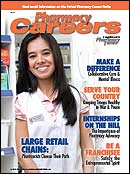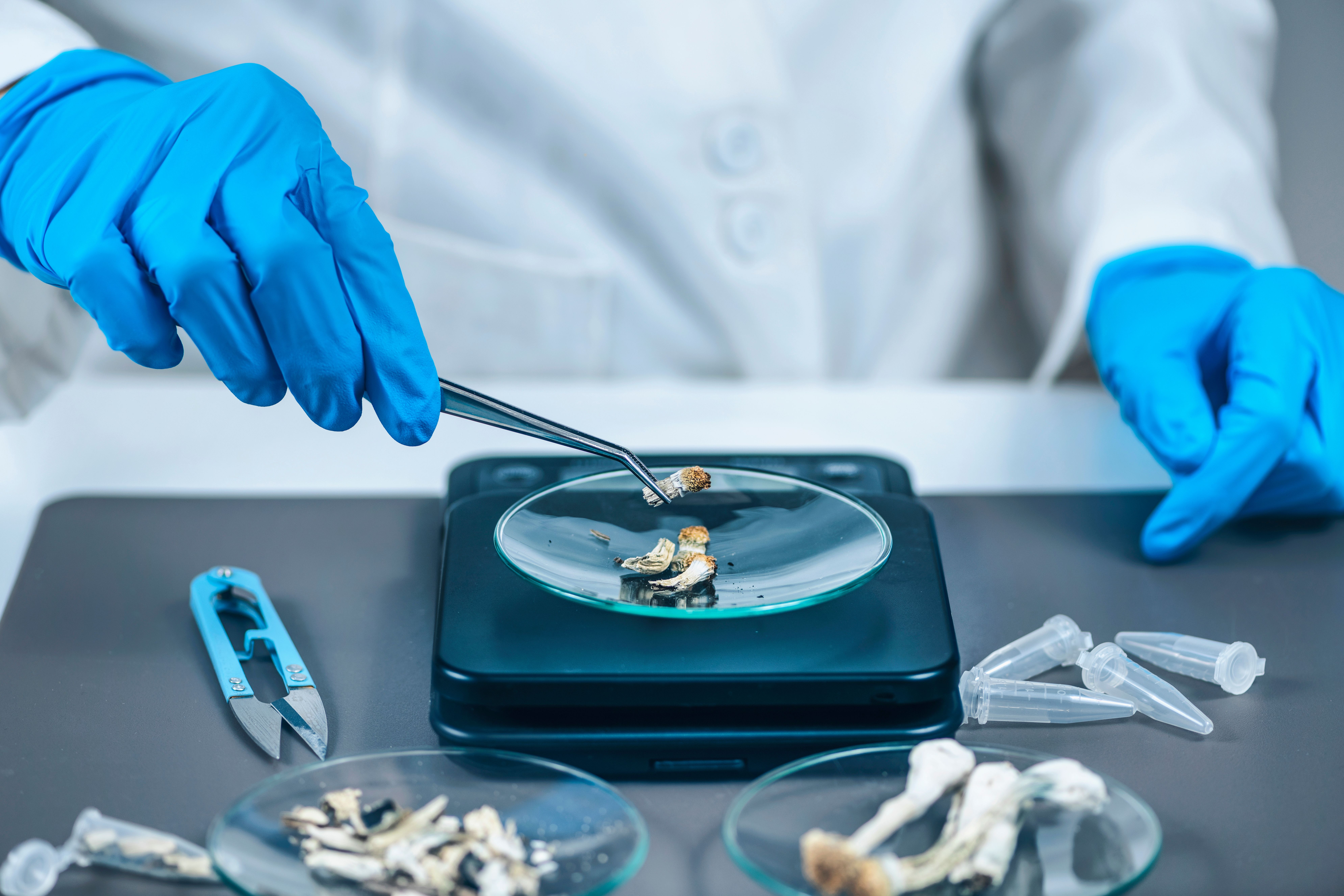Publication
Article
Pharmacy Careers
Catering to the Masses: Low Prices, Innovation, and Convenience
Author(s):
Ms. Heinze is a freelance writer based in Vancouver, British Columbia
With America?s collectivepocketbook undercontinued strain, massmerchandisers offeringpharmacy services are respondingby offering low-cost prescriptions incombination with in-store clinics toappeal to budget-conscious individualswho do not have a lot of time on theirhands.
Wal-Mart Pharmacists Make a Difference in Patients? Lives

For Wal-Mart, part of this effortinvolves its offer of $4 generic drugs,explains spokesperson Christi DavisGallagher. ?Our commitment to providingaffordable, accessible solutionsto America?s health care challenges isimportant. We will continue to focuson finding solutions to the toughesthealth and wellness dilemmas ourcustomers may be facing,? she said.One way the organization is achievingthis is by leveraging technologyto drive efficiencies. ?Just as our $4prescription program has saved ourcustomers more than $1 billion sofar, we know through technology,innovation, and collaboration, thereare other ways we can do our part tooffer solutions to these issues.?
At the pharmacist level, Gallaghernotes, Wal-Mart promotes the involvementof pharmacists as part ofthe overall health care solution. ?AtWal-Mart, we want to be a placewhere our pharmacists feel like theyare truly making a difference in thelives of their customers by offeringaffordable health care solutions like$4 prescriptions,? she said. ?Helpingour customers save money so theycan live better, healthier lives is Wal-Mart?s mission and top priority, andit is something our pharmacists areproud of.? She adds that this is onereason why the company is able tonot only attract, but also to retain, itspharmacy personnel.
Growth and Development Possibilities with Target
Last May, Target announced pricereductions on OTC and prescriptiondrugs, including $4 or less on OTCs,$4 prescriptions, and 90-day suppliesof prescription drugs for $10. JoshuaThomas, spokesperson for TargetCorp in Minneapolis, Minnesota,underlines that it is often the company?spharmacists who act as the?face? of the organization. ?They arethe primary contact for the peoplewho travel into that store,? he said.?They are answering health-relatedquestions, and they are looked at asexperts in their department.?

Internally, Thomas explains thatTarget aims to foster a culture thatencourages growth and advancement.?There is a continuous focus on development,and how you can grow inyour role and with the company,?he said. ?It is possible to start out inpharmacy as an intern, and moveup to being a lead pharmacist andeven beyond that. From a career perspective,Target opens the door to awide variety of business areas that youmight not otherwise be exposed to.?
Thomas points out that Target?sheavy focus on design is applied toits pharmaceutical practice throughClearRx, the company?s bottlingsystem that combines esthetics withpracticality to ensure that customers?or, as they are referred to atTarget, guests?remain well informedabout how to take their medications.?At Target, design is fashionable andfunctional. You do not necessarily directly apply those concepts to thepharmacy,? he said. ?If you see whatwe have done with our ClearRx system,it has brought something newto the industry that had not beentouched for more than 50 years. Itwas about simplifying, clarifying, andenhancing the safety of our guests.?

The bottles?a considerable stepaway from the traditional brown pillcontainers that patients have beenaccustomed to for decades?featureclear, easy-to-read labels, color-codedrings that fasten around the neckof the container to distinguish onefamily member?s prescriptions fromanother?s, a flat face and back forconsultation at a glance, a liquid dispenserfor measuring quantities, anda free magnifier for those who havetrouble reading the fine print. ?It is abottle that looks great, and Target isknown for creating merchandise thatis esthetically pleasing,? Thomas said.?Taking it a step forward, we believethat design should be smart, and thatit should make peoples? lives better,and, in this case, easier. With ClearRx,it is a communications vehicle so thatour guests understand the prescriptionsthat they are taking, and canavoid the danger of possibly takingthe wrong medication or taking thewrong dose of medication.? Targetalso offers free flavoring for thosewho do not like the taste of theirmedicine.
At the store level, Target recentlyconducted some physical modificationsthat saw the pharmacy areasbeing moved from the back or centerof its stores to the front. ?What wehave learned, based on speaking withour guests, is that it would be moreconvenient if that pharmacy counterwas right at the front of the store,?Thomas said, adding that this enablescustomers to drop off their prescriptions,do their shopping, and recovertheir filled order on their way out.?Our guest is time-starved, and isalways looking to cut corners when itcomes to working against the clock.We have found that a small step likethis can have a huge impact on thecustomer?s experience.?
In-store Clinics a Health Care Destination
Another way that mass merchandisershave addressed the time-starvedconsumer/patient is by adding clinicalservices to their rosters. Wal-Mart?s in-store clinics were rolled outin 2005, and Gallagher notes that thepremise behind them is to providelow-cost care in a convenient setting.?We know that our customersspend time in our stores already, andmeeting their nonemergency medicalneeds in that same store is convenientfor them,? she said. ?Doing soat Wal-Mart prices makes the experienceeven better.? Wal-Mart clinicsaffordably price acute (Get Well) andpreventive (Stay Well) services fora number of common conditions,including sore throats, sinus infections,upper respiratory infections,earaches, bladder infections, insectbites and stings, cholesterol screening,blood sugar testing, vaccinations,drug screening, and routine physicals.
Target first began experimentingwith in-store clinics in Minnesotaand Maryland in 2003, through itspartnership with MinuteClinic. ?Wehad a great relationship with Minute-Clinic, and the idea was to test the instoreclinic environment to see if thiswas a service that our guests wantedand would use,? Thomas recounted.?We found that they did, and wewanted to find a way to make thatexperience uniquely Target.?
In 2006, this came to fruition withthe launch of the Target clinic format.The organization currently has25 locations spread out over Minnesotaand Maryland. Services includetreatments for minor illnesses (suchas allergies, colds, coughs, bronchitis,earaches, flu, mononucleosis, sorethroats, and sinus infections); minorinjuries (bruises, insect bites or stings,minor burns, splinter removal, stitchremoval, and wound checks); skintreatments (acne, athlete?s foot, coldsores, eczema, impetigo, poison ivy orpoison oak, rash, ringworm, shingles,skin infections); vaccinations; andwellness testing and screening (suchas blood pressure checks, pregnancytesting, camp and sports physicals,cholesterol screening, and smokingcessation).
?Pharmacy plays a key role in ourcontinued store growth, because itallows us to provide an environmentfor our guests that is marked byconvenience and excellent customerservice,? Thomas said. ?It plays a keyrole in delivering the in-store experiencethat we have established.?

Newsletter
Stay informed on drug updates, treatment guidelines, and pharmacy practice trends—subscribe to Pharmacy Times for weekly clinical insights.






